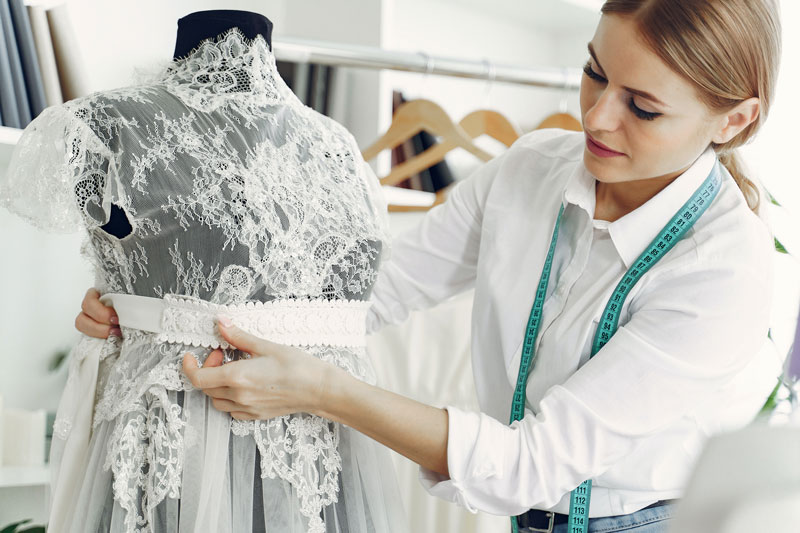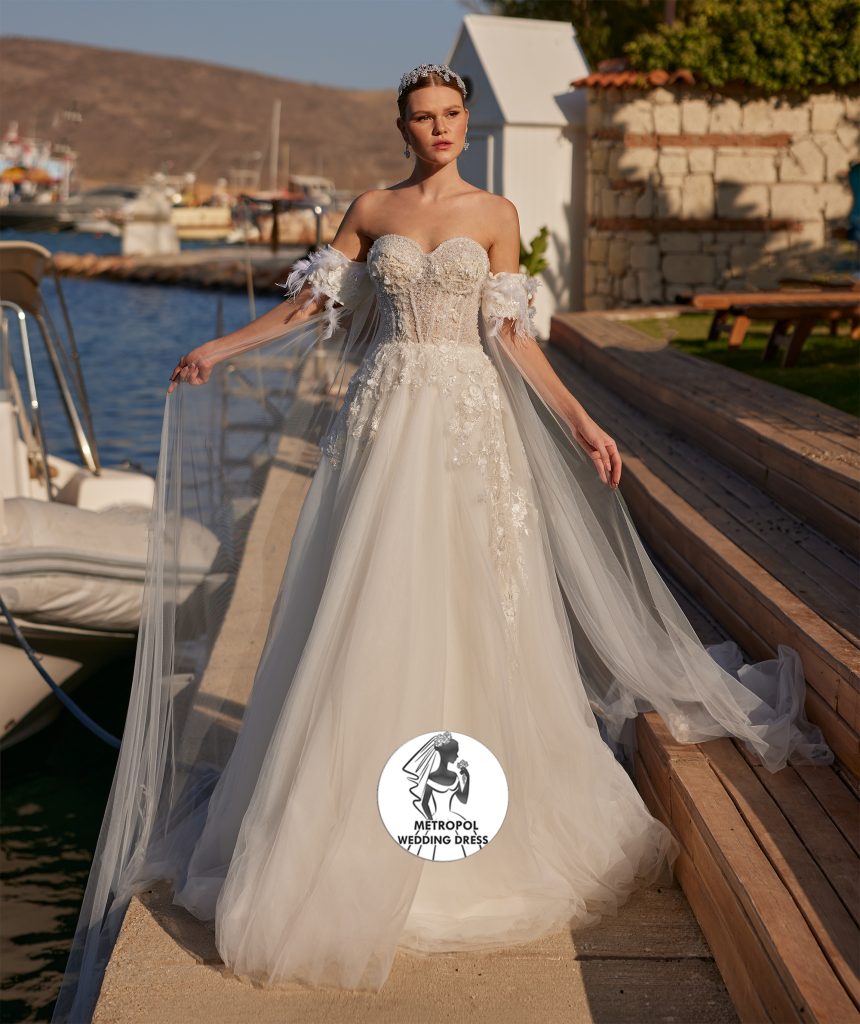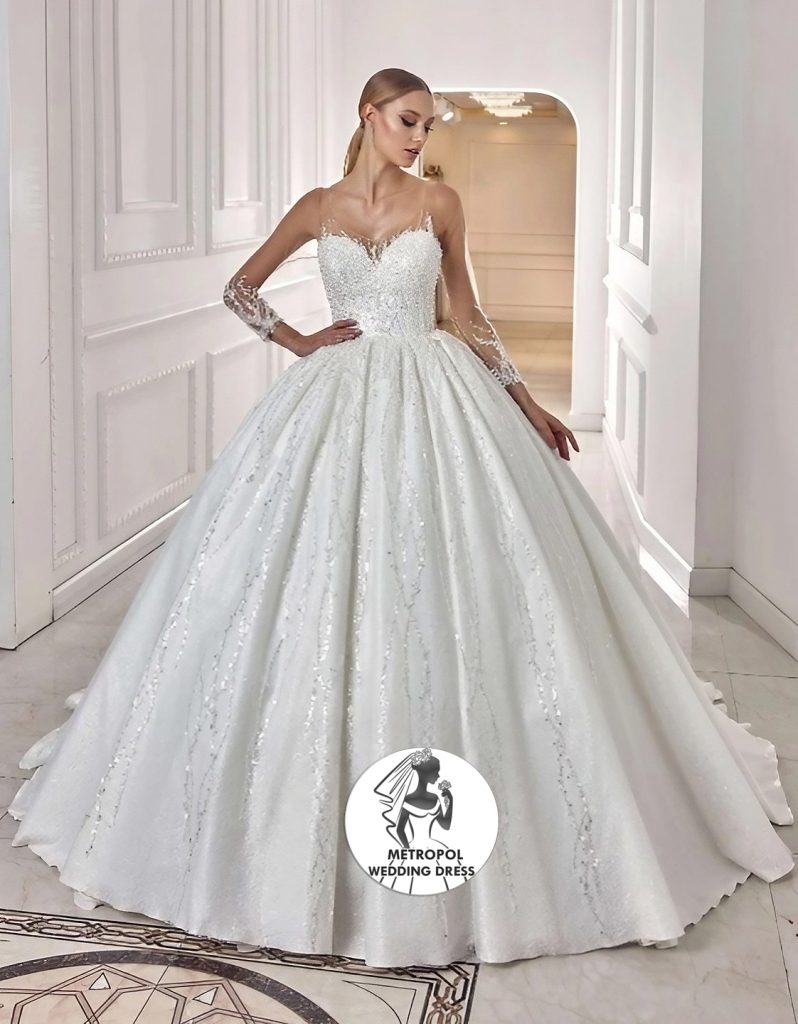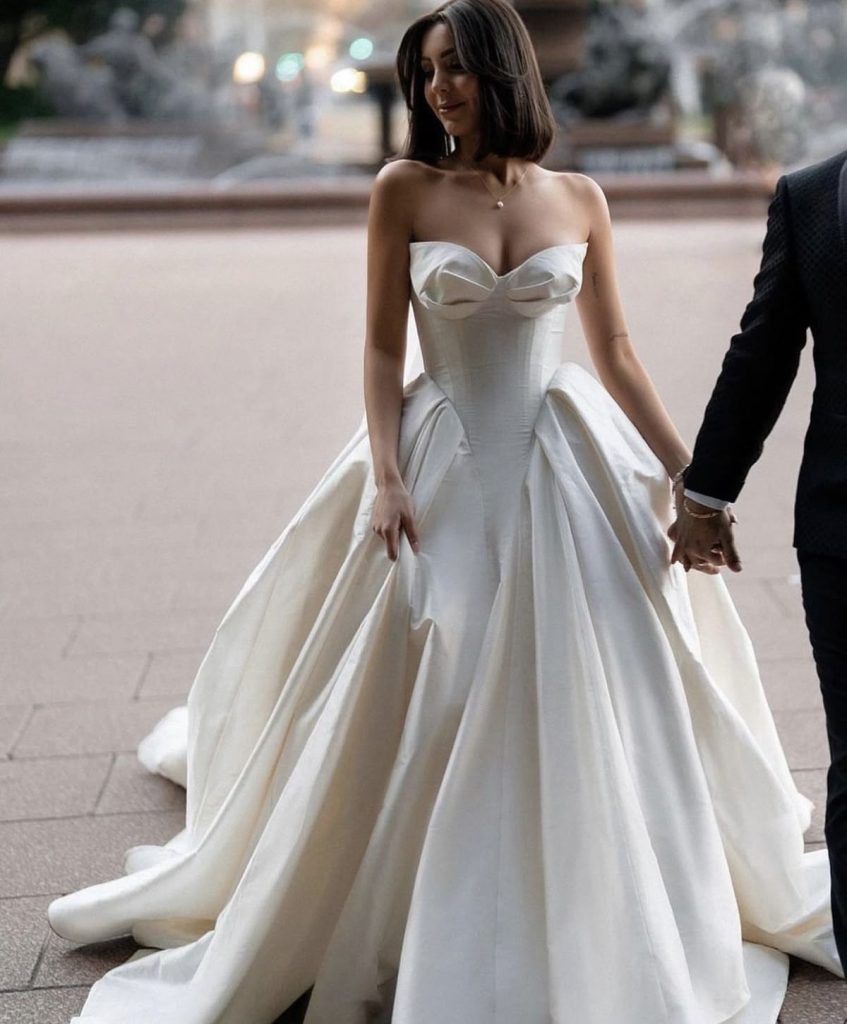
Wedding dress measurements studies
Considering the photos and details you have given about the wedding dress, we move on to the measurement stage. Metropol wedding dress is especially sensitive about size. It is very important that the wedding dress you request is the right size. For this reason, wedding dress measurements are carefully made by our experienced team. Again, during the sizing phase, you will be informed by taking the photo of the wedding dress. Combining experience and quality, metropolitan wedding dress offers you the wedding dress of your dreams. We share the happiness of working with you with our entire team.







We have been serving in the wedding dress industry since 2011.
Our production site is in Izmir Konak district of Turkey.
We deliver within 21 working days when you have 1-3 orders. For orders more than 3 pieces, we will deliver in 45 working days.
Delivered in 1 week – 10 days. It is delivered to you within 2 days for an additional fee for your urgent orders to Europe. It is delivered to you within 4 days for an additional fee for your urgent orders to the USA.
The best quality lace, tulle and fabric are used according to your model. According to the model and lace density, the price of the model will be calculated and you will be informed.
After the Order is Confirmed, half of the fee is requested from the customer as a deposit at work. The remaining half is charged before being delivered to the cargo at the end of the work.
Our payment methods are Western Union, Ria, Money Gram.
Wedding dress measurements studies
Wedding dress measurements studies are an essential aspect of the fashion industry. The measurements taken for a wedding dress are crucial as they determine the fit of the dress on the bride. A wedding dress is one of the most important garments a woman will wear in her lifetime, and therefore, it is crucial that the measurements taken are precise. Wedding dress measurements studies involve the use of various tools and techniques to ensure accurate measurements.
The measurement process can take several hours, depending on the complexity of the dress and the level of customization required by the bride. One of the primary tools used in wedding dress measurements studies is the measuring tape. The tape is used to take body measurements, such as bust, waist, hips, and length. These measurements are then used to determine the size and proportions of the dress that will best fit the bride’s body.
In addition to measuring tape, designers may also use dress forms to aid in the measurement process. Dress forms are three-dimensional models of the human body that allow designers to visualize the dress on a body and make adjustments to the fit. Apart from the tools used in wedding dress measurements studies, the body shape of the bride also plays a significant role in the final fit of the dress. Different body shapes require different measurements and considerations when designing and tailoring a wedding dress.
For example, a pear-shaped bride may require a dress with a fitted bodice and a flared skirt to accentuate her waist and balance out her hips. Similarly, an apple-shaped bride may benefit from a dress with a V-neckline to elongate her torso and draw attention away from her midsection. The fit of a wedding dress is not only important for the bride’s comfort but also for the overall appearance of the dress on the wedding day.

It is crucial for designers to pay close attention to the body measurements and shape of the bride during the design process to ensure that the dress fits her perfectly. This is especially important for bespoke wedding dresses which are custom-made to fit the bride’s body precisely. Furthermore, the style and fabric of the dress can also impact the fit and comfort of the bride.
For example, a dress made of heavy fabrics may not be suitable for a summer wedding, while a dress with a lot of intricate beading may be uncomfortable for a bride who plans to dance the night away. Therefore, designers must consider the bride’s preferences and the location and season of the wedding when choosing the style and fabric of the dress.
Another factor that designers must consider when making wedding dresses is the bride’s height. A taller bride may require a dress with a longer hemline, while a shorter bride may benefit from a dress with a high waistline that creates the illusion of longer legs. Additionally, designers must also consider the bride’s undergarments and shoes when designing the dress. The right undergarments can help create a smooth silhouette, while the shoes can affect the height and posture of the bride, which can impact the way the dress fits and looks.
To ensure that the wedding dress fits perfectly, many designers conduct measurements studies to determine the most common body measurements and shapes of brides. These studies help designers create patterns and styles that are more likely to fit the majority of brides, reducing the need for extensive alterations. In addition to measurements studies, designers also use advanced technology such as 3D body scanning to create custom-fit dresses for individual brides.
This technology allows designers to create a detailed digital model of the bride’s body, which can be used to create a dress that fits perfectly. Another technique used by designers is draping, where fabric is draped over the bride’s body to create a unique and custom-fit dress. In addition to the technicalities of designing a wedding dress,designers must also consider the style and preferences of the bride. Some brides may prefer a traditional and classic look, while others may opt for a more modern and trendy style. Some brides may also want to incorporate cultural or religious traditions into their dress. Designers must be able to listen to the bride’s needs and desires and incorporate them into the design.
Furthermore, the choice of fabric is another important factor that designers must consider when designing a wedding dress. The fabric should be comfortable and easy to move in, while also being durable and able to withstand the wear and tear of the wedding day. In addition to designing the dress itself, designers must also consider the accessories that will complete the bridal look. This includes shoes, jewelry, veils, and even the undergarments that will enhance the fit of the dress. The accessories should complement the dress and enhance its beauty, rather than overpower it.
To ensure the perfect fit of the dress, designers often conduct measurements studies. These measurements help designers to create a custom-made dress that fits perfectly on the bride’s body. This involves measuring the bust, waist, hips, and other body parts to ensure that the dress fits snugly in all the right places. This process can take several fittings and adjustments until the dress fits the bride’s body perfectly. In addition to measurements studies, designers also consider the bride’s body type and shape.
Different silhouettes are more flattering on certain body types than others, so designers must choose a silhouette that will accentuate the bride’s best features. For example, an A-line dress is often recommended for brides with pear-shaped bodies, while a ballgown can look stunning on brides with hourglass figures. Additionally, designers must consider the bride’s height and choose the appropriate length of the dress to ensure that it complements her body proportions. Apart from measurements and body type, designers also consider the style of the wedding and the venue when designing the dress.
For instance, a beach wedding will require a dress made from lighter fabrics such as chiffon or organza, while a formal wedding may require a more structured and elaborate dress made from heavier materials like satin or lace. Designers may also consider the bride’s personal style and preferences when creating the dress. Some brides prefer a more traditional look, while others opt for a modern and edgy style. Designers must also consider the overall wedding theme and incorporate elements that tie in with the theme.
For example, if the wedding has a bohemian theme, the designer may use floral or lace details to reflect that style. Designers also take into account the bride’s comfort when creating the wedding dress. A wedding day can be long and tiring, so it’s important that the dress doesn’t restrict the bride’s movement or cause discomfort. For example, a dress with a tight bodice may be uncomfortable for a bride who wants to dance at her reception.
Therefore, designers may choose to incorporate stretchy fabrics or provide extra support for the bride’s comfort. Wedding dress measurements studies have shown that a bride’s measurements often change leading up to her wedding day. In many cases, brides may lose weight or gain weight leading up to their wedding day, which can make the dress fitting process a challenge.
To accommodate for these changes, designers may add extra fabric or create a dress that can be adjusted easily. They may also schedule multiple fittings to ensure that the dress fits perfectly on the wedding day. In addition to considering the bride’s comfort and body measurements, designers also think about the venue and season of the wedding. For example, a beach wedding may require a lighter, airy fabric while a winter wedding may require a dress with long sleeves and heavier fabric.






